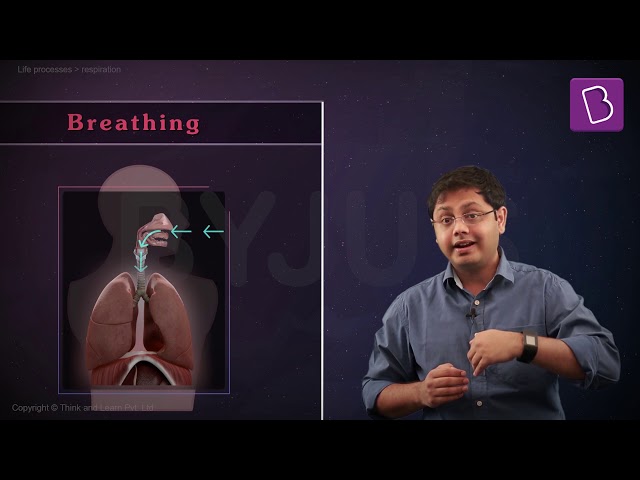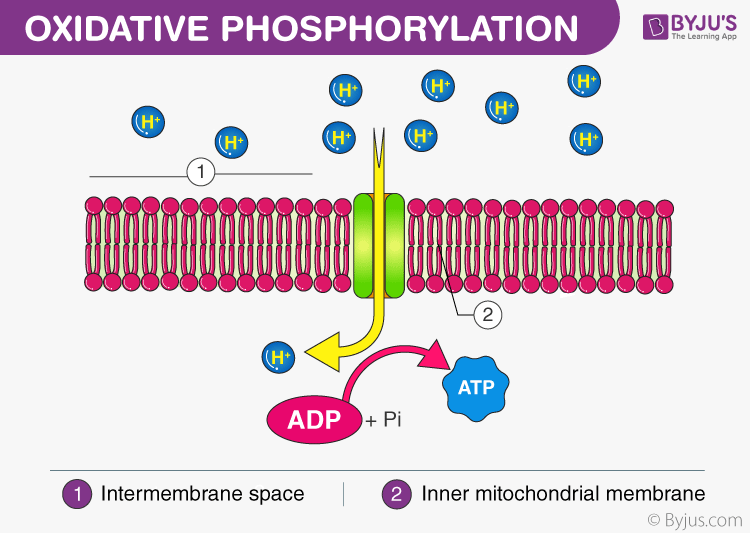
Respiration Definition
“Respiration is defined as a metabolic process wherein, the living cells of an organism obtains energy (in the form of ATP) by taking in oxygen and liberating carbon dioxide from the oxidation of complex organic substances.”
(The above statement refers to the biochemical definition of respiration)
Table of Contents
What is Respiration?
Respiration is a metabolic process that occurs in all organisms. It is a biochemical process that occurs within the cells of organisms. In this process, the energy (ATP-Adenosine triphosphate) is produced by the breakdown of glucose which is further used by cells to perform various functions. Every living species, from a single-celled organism to dominant multicellular organisms, performs respiration.
Let us have a detailed look at the different types of respiration in organisms.
Also Read: Aerobic Respiration
Types of Respiration
There are two types of respiration:
Aerobic respiration
It is a type of cellular respiration that takes place in the presence of oxygen to produce energy. It is a continuous process that takes place within the cells of animals and plants. This process can be explained with the help of the chemical equation:
Anaerobic respiration
It is a type of cellular respiration that takes place in the absence of oxygen to produce energy. The chemical equation for anaerobic respiration is
Also Read Difference Between Aerobic Respiration and Anaerobic Respiration.
Phases of Respiration in Organisms
Respiration occurs in the cytosol and around the plasma membrane in prokaryotic cells. In eukaryotic cells, respiration takes place in the mitochondria, which is also considered as the powerhouse of the cells.
This process is very much similar to internal combustion of the car engine, wherein organic compounds and oxygen go in, while water and carbon dioxide comes out. The energy that is liberated powers the automotive (or cell).
The three phases of Respiration are:
Glycolysis

The molecules of glucose get converted into pyruvic acid which is oxidized to carbon dioxide and water, leaving two carbon molecules, known as acetyl-CoA. During the process of glycolysis, two molecules of ATP and NADH are produced. Pyruvate enters the inner matrix of mitochondria and undergoes oxidation in the Kreb’s cycle.
Also Refer: Glycolysis
Oxidative Phosphorylation

Oxidative phosphorylation is the process in which ATP molecules are formed as a result of the transfer of electrons from NADH or FADH2 to O2 by a series of electron carriers. This process takes place within the mitochondria of a cell.
Explore: Oxidative Phosphorylation
Citric Acid Cycle
This is also known as the tricarboxylic acid cycle or Kreb’s cycle. Two ATP molecules are produced in each phase of the citric acid cycle and it takes place within the mitochondrial matrix of a cell. The electrons generated in Kreb’s cycle move across the mitochondrial matrix.
Also Refer: Photosynthesis.
To learn more in detail about respiration, different types of respiration in organisms and other related Biology topics with interactive video lessons, keep visiting BYJU’S Biology
To know more, watch the video given below:

Frequently Asked Questions
What is ATP?
ATP-Adenosine triphosphate is called the energy currency of the cell. ATP is an organic compound composed of the phosphate groups, adenine, and the sugar ribose and functions by providing energy for various biochemical processes within the cells.
Define the Krebs cycle.
The Krebs cycle is also known as Citric Acid Cycle or Tricarboxylic Cycle or TCA cycle. It is the second stage of cellular respiration that occurs in all aerobic organisms to release stored energy for further biological processes.
What is Fermentation?
Fermentation is a chain of chemical reactions or a metabolic process through which bacteria, yeast and other microorganisms obtain the energy required for the biological processes. It is an Anaerobic Pathway, which is used for producing alcoholic beverages, yogurt and other food products.
Why do we need energy?
Energy work as fuel for our body. All living species obtain energy from the food they eat and we require energy for different metabolic activities including growth and development, repair, etc.
What is Glycolysis?
Glycolysis is the primary stage of cellular respiration. It is a biochemical pathway, where glucose is oxidized to a simpler organic compound. The series of reactions of the Glycolytic pathway takes place in the cytosol of a cell.
What is Cellular Respiration?
Cellular respiration is a set of metabolic reactions that take place in all living cells to release energy by converting biochemical energy from nutrients into adenosine triphosphate- ATP. Based on the oxygen demand, cellular respiration is divided into- Aerobic respiration and Anaerobic respiration.
Define Aerobic and Aerobic respiration.
Aerobic respiration is a type of cellular respiration, which takes place in the presence of oxygen. This type of respiration is common in all plants and higher animals, including humans, mammals, and birds.
Anaerobic respiration is a type of cellular respiration that takes place in the absence of oxygen and is common in all lower organisms such as bacteria and yeast.
Where does cellular respiration occur in plant cells?
In all green plants, cellular respiration takes place in the mitochondria of the cell in the presence of oxygen.
What is the balanced chemical equation for Cellular Respiration?
C6H12O6 (Glucose) + 6O2 (Oxygen) → 6CO2 (Carbon dioxide) + 6H2O (Water) + ATP (Energy)

the notes are good
VERY GOOD PLATFORM FOR LEARNING. KEEP GOING.
thanks a lot
thank u very much
The notes are very good and very useful 💫
It was so helpful ☺️☺️☺️🙂☺️☺️
Great
Very good explanation thank you very much 😁😊
Very good explanation for respiration
GOOD NOTES
All the teachers help me always💯💯💯💯
It is a good platform for learning
Thank you it helps us a lot
Thank you so much👍
Nice teaching, thank you so much.
Very clear and understanding.
thank you so much